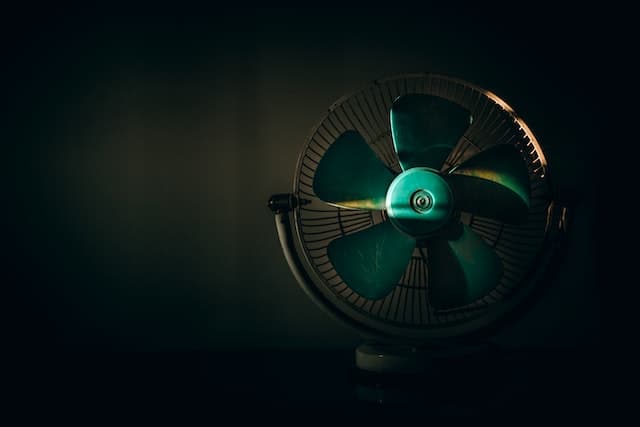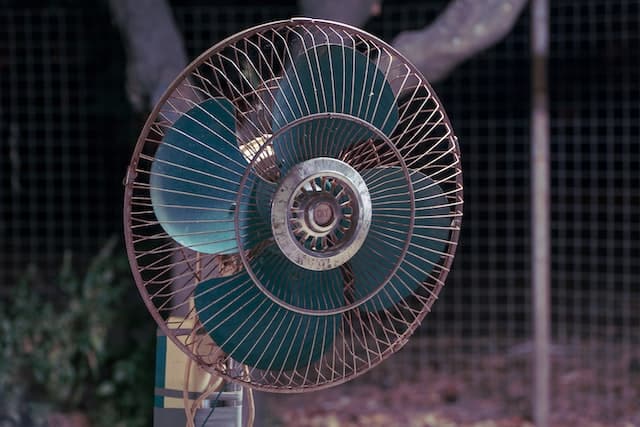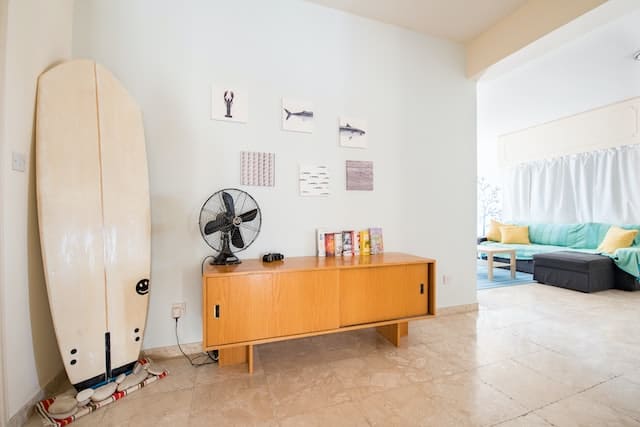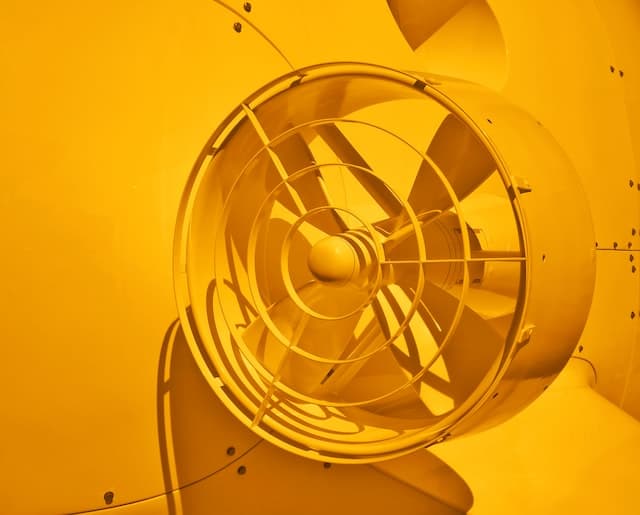Are you wondering if fans should spin forward or reverse? Regardless you have a ceiling fan or a desk fan at home; they both work to provide a cooler temperature. On the other hand, many people are curious about the direction of the fans. Which direction should a fan spin and will it affect the output of air? We will find out the answer below.
Should fans be forward or reverse? The direction where the fan spins will have to depend on the time of year. During the summer, the fan should spin forward and during the winter, it should spin in reverse. By changing the direction of the fan, you can get the most out of it. The forward direction in the summer helps create a downdraft and provides a direct and cool breeze. On the other hand, the reverse direction during the winter helps create an updraft that effectively circulates warm air.
Fans are versatile and functional appliances that you can have at home. They come in different types, styles, sizes, and designs. Fans can keep the house cool and warm depending on the season. You can change the direction of the fan during the summer and winter seasons. By doing this, the temperature inside your house will be more comfortable and you can also save on your energy bills.

Set the Ceiling Fan in a Forward Direction for the Summer Months
During the summer months, set your ceiling fan in a forward direction. This will send to send cool air down to the ground. The air that comes from the ceiling fan will help evaporates perspiration and also creates a wind chill effect. To make you feel cooler.
How to Determine if the Ceiling Fan is Set in a Forward Direction
To determine if the ceiling fan is set in a forward direction, turn it on and stand under where the blades of the fan spin. Observe how the fan spins. In the forward direction, the blades should spin in the opposite direction of a clock.
Set the Ceiling Fan in a Reverse Direction During the Winter Months
During the winter months, you should set your ceiling fan in a reverse direction. This will slow down its speed and will push warm air to the ground. The reverse direction will make the room feel warmer so you can lower the temperature level of the thermostat. Using a ceiling fan in a reverse direction during the winter will save on your heating bills.

How to Determine if the Ceiling Fan is Set in a Reverse Direction
To determine if the ceiling fan is set in a reverse direction, turn it on and stand under where the blades spin. Observe how the blades rotate. In a reverse direction, the blades should spin in the same direction as the hands of a clock. You can also check out this article that discusses which way is clockwise on a ceiling fan. We have shared an in-depth discussion about the topic.
Setting the Fan to Spin Forward or Reverse
Setting the fan to spin forward will allow air to blow downward from the ceiling and into the ground. As a result, the room feels cooler. In the winter months, the fan should not blow directly on you. This is because it will increase the wind chill factor which can make you feel cooler. Instead, set the fan in a reverse direction so that it will blow air into the ceiling. This will also force the trapped air to come down which makes the room feels warmer.
✅ Video – Correct Ceiling Fan Rotation Direction
Everyday Home Repairs shared the video below on YouTube. It discusses the correct ceiling fan rotation direction. You might have noticed the small switch located at the side of your ceiling fan. What is it for? Can you use it to change the direction of the fan? Check out the video for more information.
Set the Ceiling Fan to Spin Forward so that it Blow Air Down
When the temperature is hot, you should set your fan in a forward direction so that it blows air down. The air that comes from the fan will cool your skin and can also effectively draw air indoors. This will help keep the air inside the room cooler and fresher. Take note that fans are used for air circulation and cooling. Do not turn on the fan if there is no one inside the room.
Set the Ceiling Fan to Spin in Reverse so that it Draw Air Up
During the winter months, you need to set the fan in a reverse direction so that it draws air up. This will also bring the trapped warm air near the ceiling into the ground which makes the occupants of the room feel warmer. Moreover, if the vents of your AC unit are located near the floor, you can set the fan in a reverse direction so that it will draw the cool air up and move it around the room.
Does the Direction of the Fan Make a Difference?
The direction of the fan makes a difference. When the fan is set in a reverse direction for the winter, the spinning motion will draw cool air from a room and up to the ceiling. When the air rises to the ceiling, it will push the trapped air into the room. The air trapped in the ceiling is usually warm. This is because warm air rises and you can bring this air down by setting the fan in a reverse direction. On the other hand, you need to take note that when the fan is set in a reverse direction, there will be o breeze coming from it.

Can the Forward and Reverse Direction of a Fan Save Energy?
The forward and reverse directions of the fan can help save energy if they are used properly. By using a fan with an AC unit in the summer, you can raise the thermostat setting up to 4 degrees Fahrenheit. This will save energy while keeping the room feel cool. During the hot weather, it is ideal that you run the AC unit and the fan together.
On the other hand, placing the fan in a reverse direction during the winter months will also allow you to save on your energy bill. This is because, in the reverse direction, it will push the warm air that gets trapped to the ceiling and into the ground. Setting the fan in a reverse direction during the winter will allow you to turn the thermostats down without the room getting cold. You can save up to fifteen percent on your energy bills during the winter.
How to Determine if the Ceiling Fan is in a Forward or Reverse Direction?
To determine if the ceiling fan is in a forward or reverse direction, you need to stand directly below the blades and observe which way it spins. If the fan turns to the left, it is in a forward direction. However, if the fan is spinning to the right, it is in a reverse direction.

How to Adjust the Direction of the Fan
You can adjust the direction of the fan manually or with the use of remote control. Most high-tech fans feature a remote control for easy operation. Moreover, ceiling fans are designed to have a remote or wall control so you can easily adjust the setting without climbing a ladder just to reach the fan. All that you need to do is to press the right button on the remote according to how you want to adjust the setting. We have also shared this article titled, ceiling fan direction myths. You can check out the article for more tips and information.
How to Enable the Reverse Function of the Ceiling Fan?
Nowadays, most ceiling fans are designed to have a switch on the side of the motor that you can use to enable the reverse function. The switch is labeled as forward and reverse. You can click the switch to choose the rotation according to the season. Moreover, you can also find ceiling fans that have a reverse function incorporated into the remote control.
Make sure to check the user manual to see how it can be reversed. If the ceiling fan is set in a reverse function, it should spin at a low speed. For the ceiling fan to be effective in the winter, it should create a gentle updraft.

Should You Run the Ceiling Fan All Year-Round?
You can run the ceiling fan all year round. It can help keep you feeling cool during the summer months and warm in the winter months. A lot of people may not be aware that using a ceiling fan in the winter months comes with some benefits. Not only can it make the room feel warmer, but it can also help you save on your energy bills.
Furthermore, running the ceiling fan all year round can help reduce the wear and tear on your heating and cooling systems. If you decide to run your ceiling fan all year, make that it is in the proper setting. This means that it should spin forward during the summer and reverse during the winter. Check the user manual on how to properly change the setting of the fan. You can also read this article that discusses if ceiling fan direction really matters. We have shared helpful information that you can refer to.
Conclusion
In this article, we have discussed if fans should be forward or reverse. We have found out that fans should spin according to the season. This means that it should spin forward during the summer and in reverse during the winter. The proper direction will help you feel cool or warm and will also help save on your energy bills. Thank you for reading!